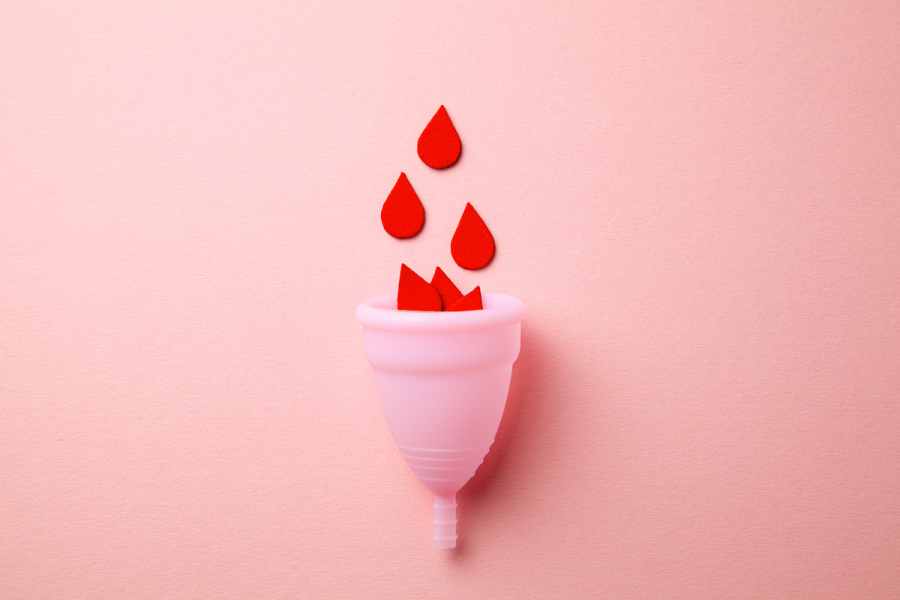Columns
Paradigm shift to the menstrual cup
This budding product is far better than other menstrual products.
Kribina Pathak
Menstruation to a woman is both a boon and a bane. A boon for being able to create a life-form, and a bane because of the hormonal fluctuation, cramps, and above all, the menstrual rule attached to the bleeding days: Blood flow to be taken care of in seclusion. A menstruating woman has to go through many steps of physiological, biological and cultural restriction when she bleeds. Furthermore, the menstrual products which are most commonly preferred raise several issues during those days.
Conventional disposable sanitary pads, tampons and clothes might have a few advantages while they have numerous shortcomings. Firstly, excluding clothes, they are highly commercial products that are far beyond the purchasing capacity of many women, especially rural women. Unable to buy expensive products, they are forced to use reusable cloth. By using old rags, a woman becomes vulnerable to different kinds of diseases like reproductive tract cancer and sexually transmitted diseases.
Secondly, sanitary pads and tampons come with a huge environmental burden; A sanitary pad takes 500 to 800 years to decompose. A sanitary napkin contains 2.4 grams of plastic: One woman in her active menstrual period disposes of 11,000 menstrual products; that is a total of 26.4 kg of plastic. In India alone, 121 million females produce 21,780 million used pads annually. The figures are mind-boggling in North America where 20 billion sanitary napkins are disposed of on an annual basis. Besides the ecological impacts, the Royal Institute of Technology in Stockholm identified that processing the low-density polyethylene used in tampons has the largest impact on global warming.
Thirdly, the use of sanitary pads has health implication like pelvic infection and vaginal pH changes as they retain moisture for a long time. Also, the chemical used to make them odourless creates other risks. A high amount of pesticides are applied during the production of plant products (like cotton, fabrics, jute and bamboo) which may remain in sanitary pads and tampons, leading to a carcinogenic effect.
Menstrual cup
There is one budding product that is far better than other products, this is the menstrual cup. The history of the menstrual cup dates back to 1930, but medical silicone was introduced in the early 21st century. The cup is inserted into the vagina to collect the menstrual blood. It comes in different sizes according to fertility status, and can be reused for more than five years. Although it has weaknesses, the cup was found to be one of the most viable options for managing the monthly blood flow by experts. A Guide to Menstrual Hygiene Management Materials published by the United Nations International Children's Emergency Fund (UNICEF) in 2019 states that the cup is one of the most wonderful options compared to other products.
Having used a menstrual cup for more than four months now, I have come to analyse a few other benefits in our social context. In Nepal, 10.9 million people are without access to improved sanitation facilities. Moreover, the situation in the country's schools is just dreadful. A menstrual cup that can hold the blood for 6-12 hours decreases demand for sanitation facilities. It can contribute to preventing girls from skipping school during their menstrual days. In addition, the never-ending Chhaupadi system which is associated with possible animal attacks can be eliminated with the use of this product. The smell of menstrual blood attracts animals, and the cup prevents the odour from escaping. For urban girls who commute by two-wheeler, the cup is better than sanitary pads. The pressure exerted on sanitary pads while sitting on the seat sometimes wets the outfit, and this can be avoided by using a menstrual cup. They are also far more economical, as one cup which can be bought for less than Rs1,000 lasts at least five years.
Moreover, these cups provide a great sense of relief to environmentalists like me. A 2019 Life Cycle Assessment of the product showed that cups have less than 1.5 percent environmental impact and 10 percent of the cost for a year. They are recyclable and help in achieving minimalist living. Amidst a water shortage, cups are beneficial as they reduce the water footprint during different stages of cotton, wood pulp, soft tissue paper production and processing. They decrease the need for washing the hands and private parts frequently as the blood gets trapped inside for many hours. It cuts water demand in a water stress country like ours. At times of disaster, cups are handy for transportation unlike sanitary pads which occupy a large storage space during relief distribution, and disposal will not be an issue.
Promotion of the cup
Despite the visible benefits, menstrual cups are being ignored. Except for a few, non-governmental organisations, international non-governmental organisations, local units and government agencies all focus on promoting one or the other form of sanitary napkins. Distributing sanitary napkins will further create dependence on the regular market or schools. Such policies and programmes at times of emergencies like the coronavirus pandemic will have an intensified effect on menstrual health.
Indeed, the menstrual cup will bring a transformational change in menstrual hygiene management in Nepal. Policies and programmes should be designed with an inclusive and integrated approach. Furthermore, active awareness of such products through the curriculum at the school level should be ensured. Exploration of the best products for oneself can be left to individual choice. However, more sustainable products from the economical, environmental and health aspects should be given more importance.




 14.12°C Kathmandu
14.12°C Kathmandu













%20(1).jpg&w=300&height=200)

